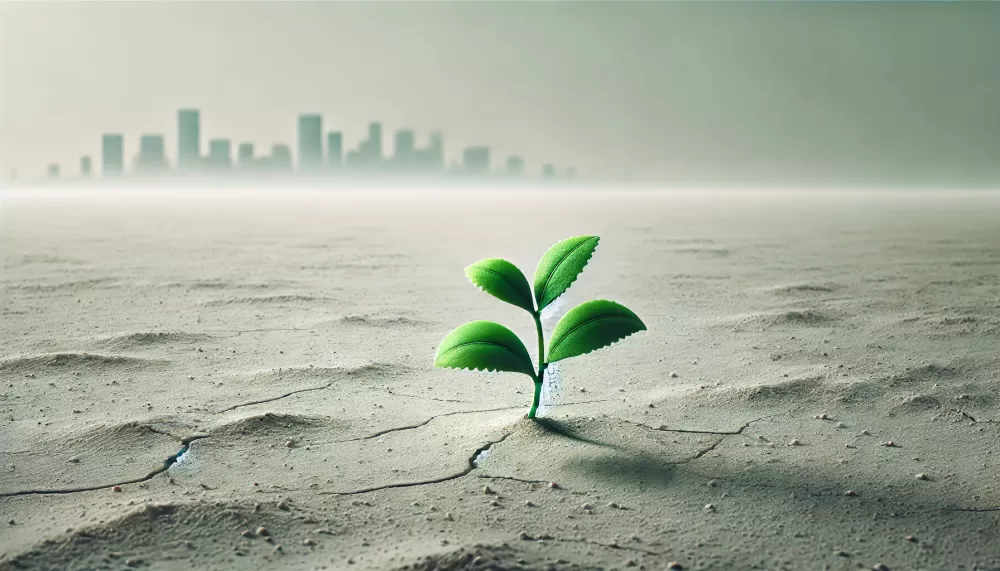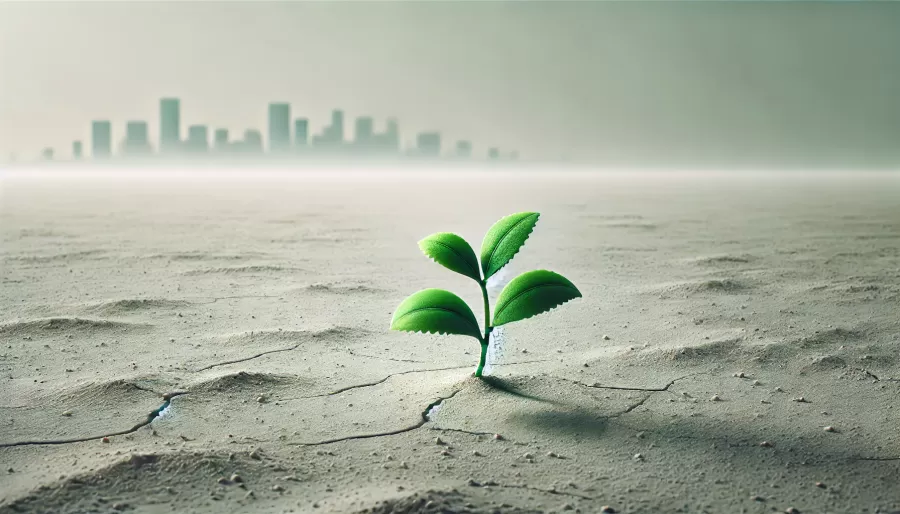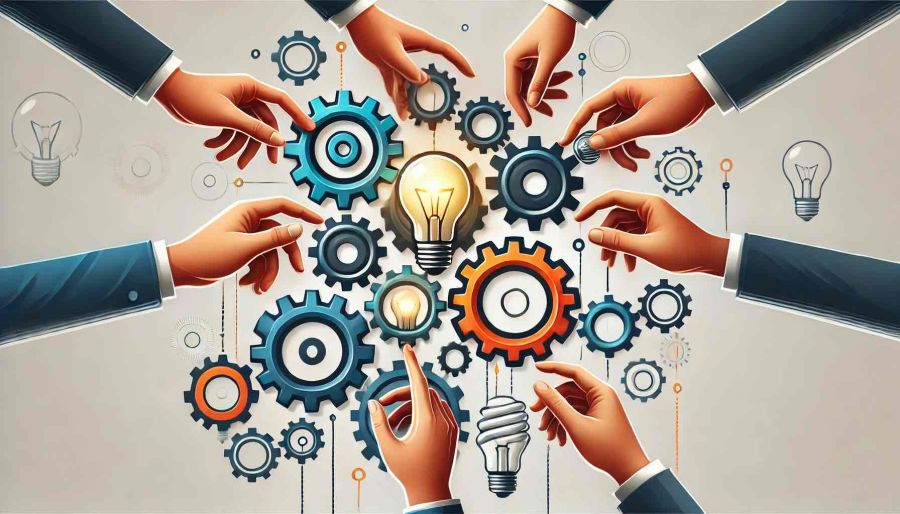The Innovation Drought: How Local Government Leaders Can Transform Resistance into Opportunity
Key Takeaways
- Understand how outdated cultures resist innovation in local government.
- Discover strategies for leaders to foster innovative thinking.
- Learn how to support change agents striving for progress.
Local governments are facing unprecedented challenges: aging infrastructure, workforce shortages, and the accelerating pace of technological change. Having worked closely with local government leadership teams throughout the country for the past decade, I’ve witnessed firsthand the complexities of navigating these challenges.
Opportunities to adopt new technologies exist, but many organizations remain stuck with outdated tools and cultural norms. These norms often prioritize stability over progress. This “innovation drought” isn’t always due to a lack of ideas or resources. Instead, it often stems from deep-rooted habits that resist change.

Leaders in local government—both elected officials and appointed administrators—have a unique chance to shape their organization’s culture and encourage innovation. If you’re struggling with barriers, I hope this article provides clarity and encouragement.
The Culture of Maintenance: A Double-Edged Sword
Local governments are designed to ensure stability, which is essential for delivering consistent services, especially during crises. However, when stability becomes the sole focus, innovation tends to be ignored.
Officials and administrators often face limited resources, short political cycles, and public scrutiny. The risks tied to innovation can feel overwhelming. For example, a city may adopt a helpful new technology, but if the provider fails, the city can be left with significant problems. This happened to the City of Zephyrhills, which adopted a smart water grid only to lose the system when the provider went out of business: Quick exit of water billing company will cost Zephyrhills
Risk factors make sticking to the status quo feel safer. However, this mindset can create an endless cycle of patching up old systems rather than embracing forward-thinking solutions.
Overcoming Challenges Fueled by Resistance to Change
The challenges facing local governments today demand a bold shift in thinking. Aging infrastructure, over encumbered budgets and workforce shortages all require solutions that go beyond “business as usual.”
For example, workforce shortages highlight the need for new hiring strategies and flexible workplaces. However, many organizations resist change. Long-term employees may expect new hires to “pay their dues,” even though job seekers now prioritize different values. Similarly, elected officials and citizens may cling to outdated practices, even if they’re no longer effective.
Innovation is rarely easy. Leaders must balance short-term needs with long-term goals. For those facing resistance, persistence is key. Focus on showing the value of innovation through small, gradual successes. Over time, these wins can shift mindsets.
Leadership: The Catalyst for a Culture of Innovation
For innovation to succeed, leaders must take clear steps to create supportive environments. This means encouraging new ideas, allowing room for experimentation, and treating failure as part of the learning process. The pandemic pushed many governments to adopt virtual tools, and AI is now expanding opportunities further. But the success of these tools depends on organizational culture. In our City Manager and County Administrator Think Tanks, some leaders use AI tools daily, while others are just starting to explore platforms like ChatGPT.
Elected officials play a critical role in setting innovation priorities during strategic planning and budgeting. Administrative leaders can then model collaboration, take calculated risks, and encourage teamwork. Innovation doesn’t always have to be focused on large scale projects. A great example of this type of innovation culture is happening in the City of Oldsmar.
Innovation in Action: City of Oldsmar
The City of Oldsmar fosters innovation by inspiring employees to dream about “what can be” while providing a platform that nurtures creativity and collaboration. Through a structured culture framework that includes group learning opportunities like book reviews and trainings, as well as twice-yearly department director retreats focused on strategy, SWOT/TOWS analyses, and brainstorming, employees are encouraged to develop impactful programs and approaches that add value and/or enhance efficiency.
These efforts have resulted in value-added, award-winning initiatives such as Oldsmar in Orbit, an augmented reality solar system model that integrates technology with outdoor learning, and the Save Our Bay program, which leverages citizen science for environmental stewardship. Additionally, an example of enhancing efficiency is the development of a cascading strategic framework by senior staff, tailored to the city’s capacity, which has streamlined focus and improved operational effectiveness. By inspiring employees to reach their potential and giving them the freedom to think creatively, Oldsmar not only drives innovation but also strengthens staff retention through a culture that fosters purpose and intellectual engagement.
Steps to Build a Culture of Innovation
- Empower Leadership: Appoint leaders who value innovation and are willing to champion it.
- Encourage Risk-Taking: Create a safe space for experimentation without fear of failure.
- Foster Collaboration: Break down silos and encourage cross-departmental problem-solving.
- Invest in Technology: Modernize systems to improve efficiency and service delivery.
- Attract and Retain Talent: Embrace flexible work arrangements and professional development to build a resilient workforce.
Each of these steps requires both patience and persistence. Leaders working to bring these changes to life deserve recognition for their courage and vision. They are not only managing the present but also shaping the future.
The innovation drought facing local governments is a cultural challenge, not a lack of ideas or resources. For leaders navigating resistant systems, fostering innovation requires persistence, creativity, and support. By empowering leadership, encouraging collaboration, and embracing strategic risks, local governments can build a culture where progress thrives.
Whether you’re leading change or supporting those who are, the journey to innovation is one worth taking. Together, we can create communities better equipped to face the complexities of tomorrow.

About the Author
Rob Duncan
Think Tanks
A secure space for open, trusted sharing among City Managers and County Administrators.
Workshops
Professionally facilitated and tailored to meet the specific needs of local government leaders.
Executive Coaching
Leadership Training
Our comprehensive training approach is designed to empower leaders and enhance their capabilities.
Think Tank Insights
Actionable leadership strategies, tools for self-awareness, and resources for executive development — crafted from real challenges and opportunities discussed by local government leaders like you.
Stay connected with fresh learning from City Manager and County Administrator Think Tanks delivered straight to your inbox.
Related Articles
What Feral Kittens Taught Us About Leadership, Trust, and Healing
The Cultural Current Dragging Down Local Government

Navigating the First 90 Days as a New City Manager

Leading While Absent: How to Empower Your Team and Protect Your Peace

The Innovation Drought: How Local Government Leaders Can Transform Resistance into Opportunity
